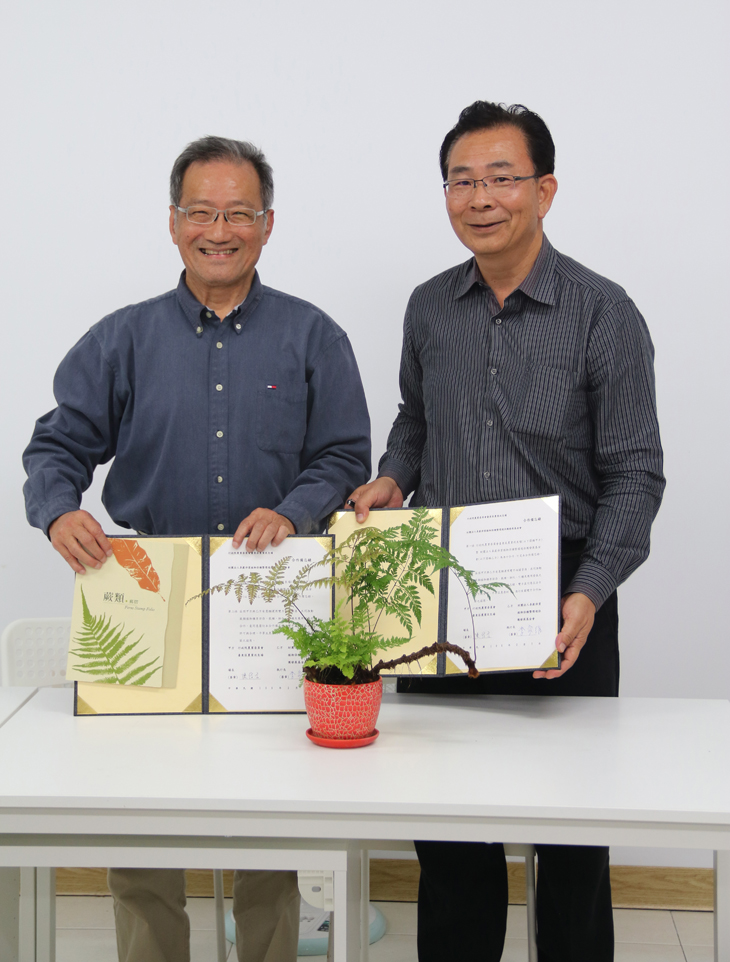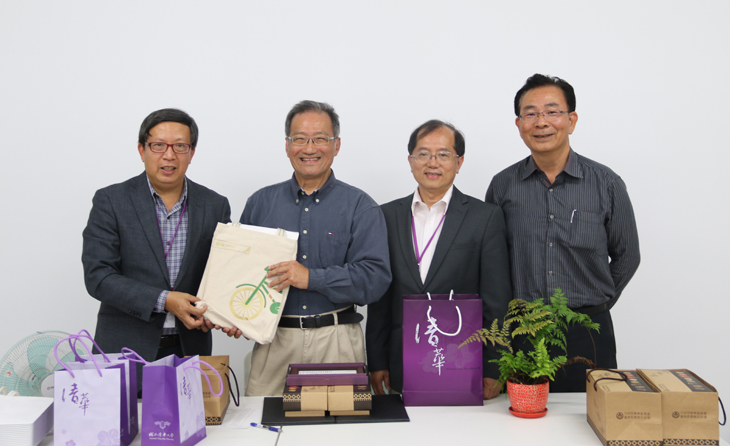The Taitung District Agricultural Research and Extension Station (TTDARES) of the Council of Agriculture, Executive Yuan signed an MOU with the Dr. Cecilia Koo Botanic Conservation and Environmental Protection Foundation on February 7, 2017 at the conservation center grounds in Gaoshu Township of Pingtung County. TTDARES Director Chen Hsin-yen and foundation CEO Li Jia-wei signed the MOU with witnesses from delegations sent by National Tsing Hua University and Chunghwa Post.
Due to Taiwan’s diverse topography and climate, it is home to such an abundance of fern species that it might be called a “kingdom of ferns.” In an effort to enhance agricultural technology R&D in recent years, the TTDARES has made merchandising its major R&D direction. It has given special effort to technology research for fern germplasm protection, cultivation, and breeding, thus establishing cultivation and breeding modes for Taiwan’s indigenous ferns. As a result, the TTDARES wishes to cooperate with the conservation center toward fern germplasm protection, cultivation, domestication, introduction, and application development while actively working to open up domestic and foreign markets while providing the industry with the technology they develop. The conservation center was established in January of 2007 by Koo Cheng-yun, chairman of TCC International Holdings Ltd., and Cecilia Y. Koo. At the same time, the Dr. Cecilia Koo Botanic Conservation and Environmental Protection Foundation was established by the Taiwan Cement Corporation, the Ho-Ping Power Company, the China Synthetic Rubber Corporation, and the Jiantan Temple. The foundation’s mission is to promote the conservation center’s operations and preserve living specimens of various rare, precious plants that possess unique ecological traits so that they may be used for research.
The MOU focuses on the three main aspects of fern-related technology experience sharing, research personnel exchanges, and joint R&D efforts. This will establish a cooperative foundation so that both parties may consolidate their R&D resources and complement each other’s needs, opening up a new climate for indigenous fern development and application.







